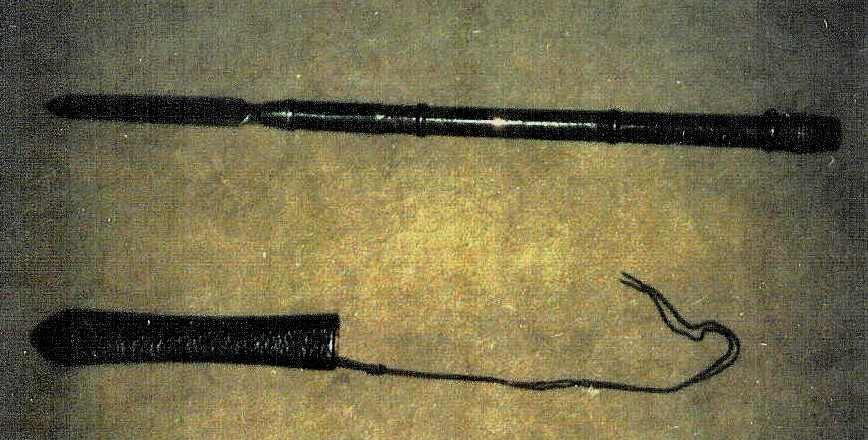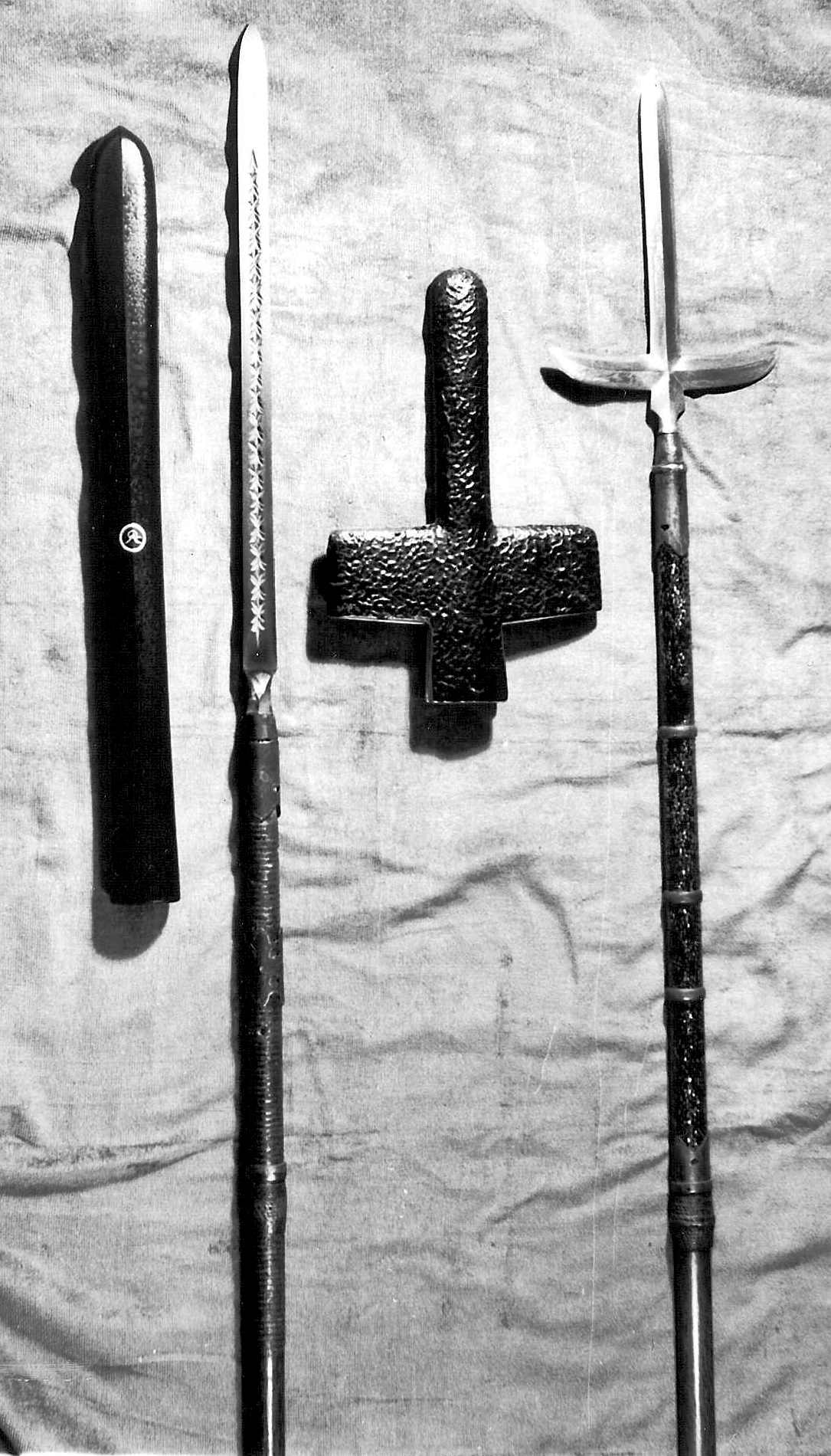|
General notes (Photo by Ed Marshall, click below for more
photos) |
The original Senjuin school was located in Yamato Province.
Yamato-den is the oldest of the Five Gokaden, and said to be the
birthplace of the Japanese Sword. The Senjuin school is also
noted for being the oldest of the five main Yamato-den. The
Mino-den or tradition is the youngest of the Gokaden with a
short history compared to the other four traditions. While there
exists documentation of it's beginning in the Hogan era
(1156-1159), the oldest extant works are by Kaneuji and Kinju
the late Kamakura period (1186-1333). The Mino-den reached it's
zenith of production in the late Muomachi Period (1392-1573).
This was directly related to the Sengoku or warring period. Many
blades were needed for the Battlefield and the numbers produced
by the schools of the Mino-den were only exceeded by the schools
of the Bizen-den. Mino swords as a whole were not necessarily
prized for their artist merit, but were sought after and highly
prized as durable, reliant, and extremely sharp swords. The two
most famous Mino smith's were Magoroku Kanemoto and Izumi no
Kami Kanesada. Through these two smith's the Mino-den achieved
perfection and became the dominant school of sword forging. They
remained in a dominant position through the Momoyama period
(1596-1644). The Mino Senjuin school, later known as the Akasaka
Senjuin school was founded by Kuninaga Senjuin, c. 1381. There
were two successive Kuninaga generations which followed, as well
as a number of other smith's. A great number of swords were
forged by this school, with swords by Mino Jumyo being the most
numerous. The Mino Seki schools still exist today.
Ken or Tsurugi is a double edged blade which were used as
Buddhist esoteric implement's opposed to weapons. They were
generally given as a gift to a temple or for the spiritual
protection of the home. This is a very large Ken attributed to
Mino Senjuin School. This Ken may not have been made as a
weapon, but the sheer size and weight of it would indicate that
it is quite capable of more than only spiritual protection. This
Ken exhibits typical Yamato traits such as Ko-Mokume hada and
Chu-suguba hamon. It is in very good polish, with a few light
surface scratches under the habaki. These scratches can not be
seen when the habaki is in place and pose no detrimental effects
to the aesthetic value of this beautiful piece.
This Ken was once accompanied by papers from the NBTHK which
attributed it to the Mino Senjuin School, sadly they have been
lost. |

%20Sampaku%20Yari.jpg)


.jpg)


Return to
Metropolitan Monroe Museum Main Page